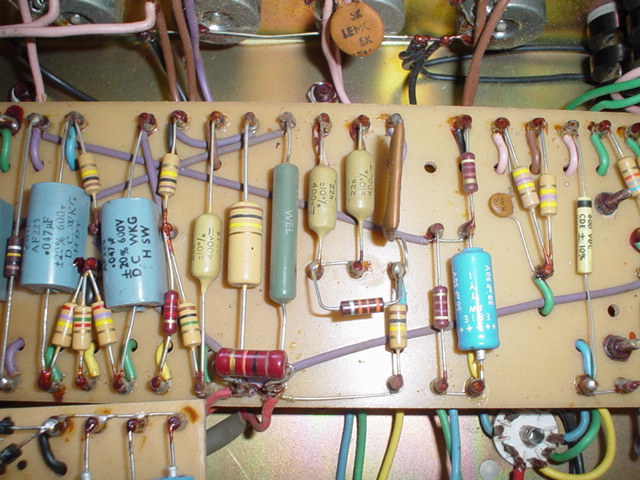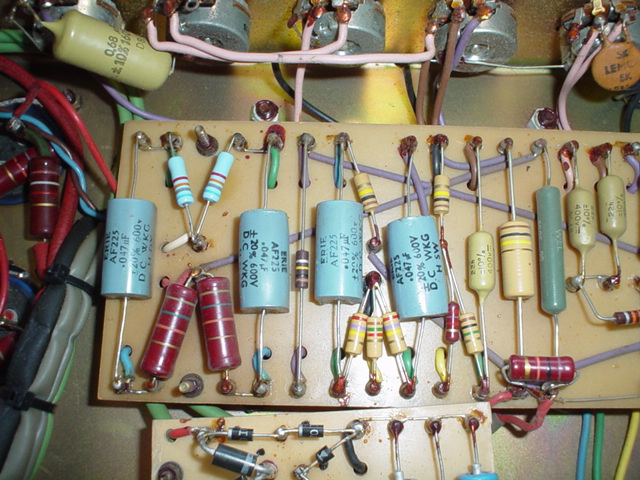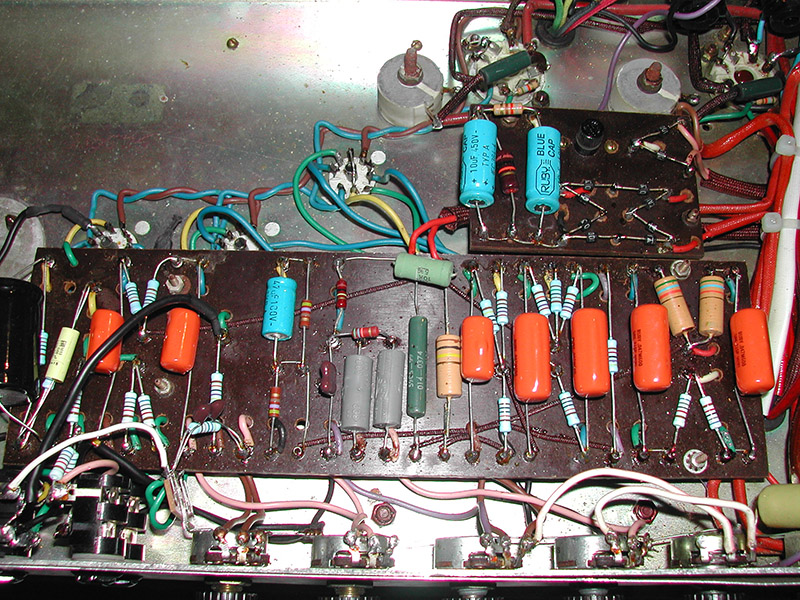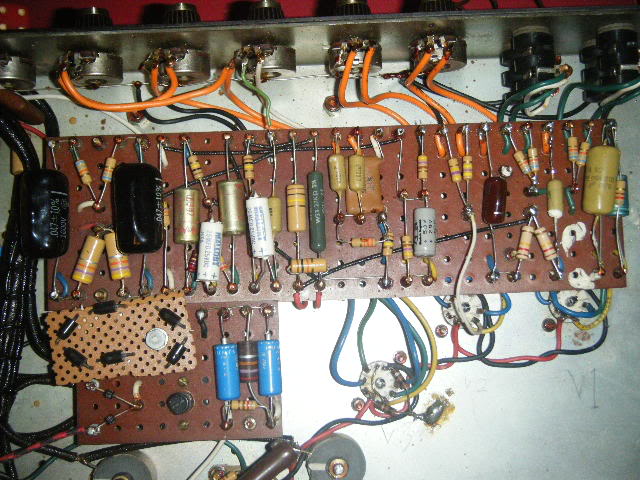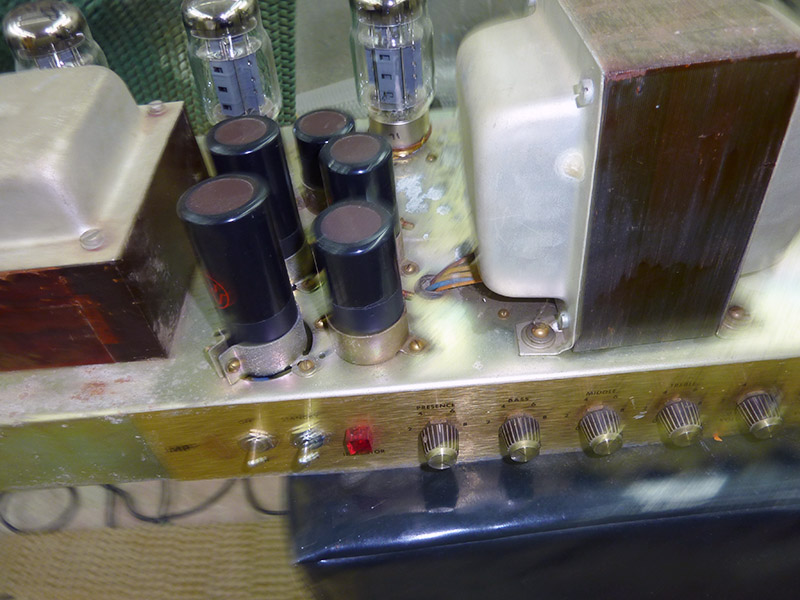Marshall Major mods
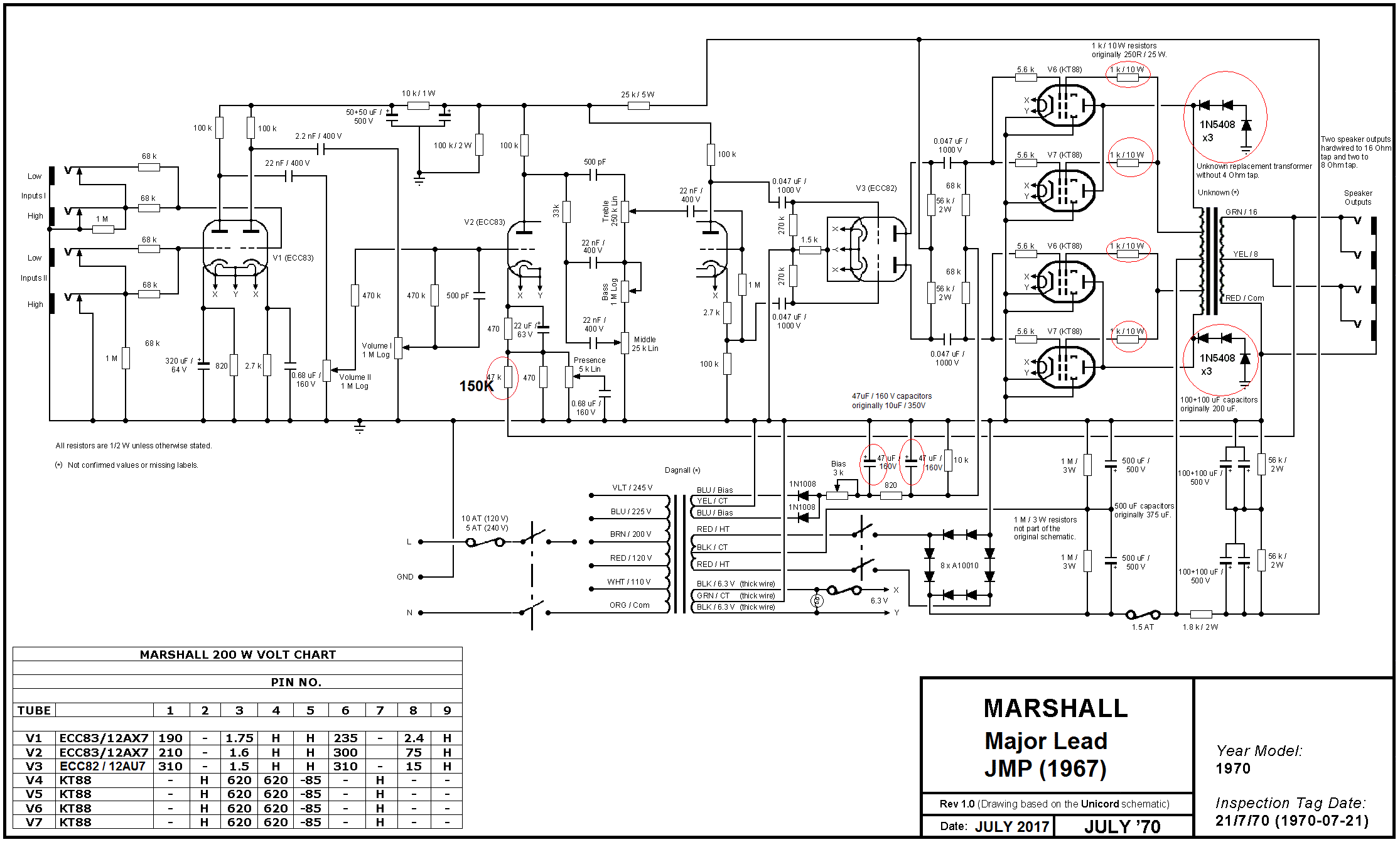
Here the four mods to get the Major more stable. See the details in red circles in schematics
First: Insert the OT protector diodes like shown.
Second: change the 4 pieces screengrid 250_Ohm Rs of KT88 to 1kOhm/ 10watt
Third: change the bias caps (2x 8uF) to 2x 47uF/ 160Volt
Fourth: change the feedback resistor (47kOhm) to 150kOhm
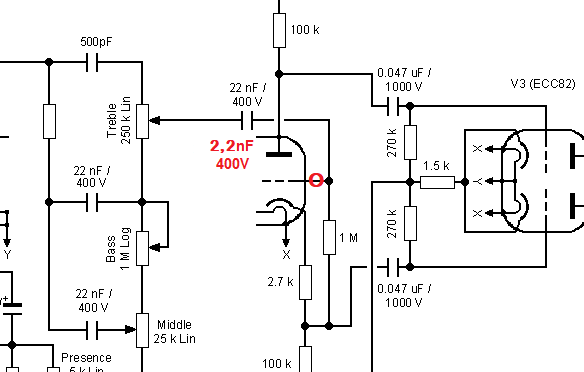
After the four system mods to make the stock Major more stable, now a few sound mods. The stock input cap (22nF/400V) of the cathodyn stage is too big. If you overdrive the Major at full tilt, this cap produces a so-called "blocking distortion" - the bass loose its definition and tightness by attacking the strings - the bass frequency sounds fuzzy. Therefore this 22nF cap must be reduced. A good value to start with is 2,2nF/400V. The more you play heavy overdrive, the smaller this cap should be. Furthermore, set in position of the red circle directly in front of the cathodyn´s grid a 150kOhm resistor (grid-stopper).
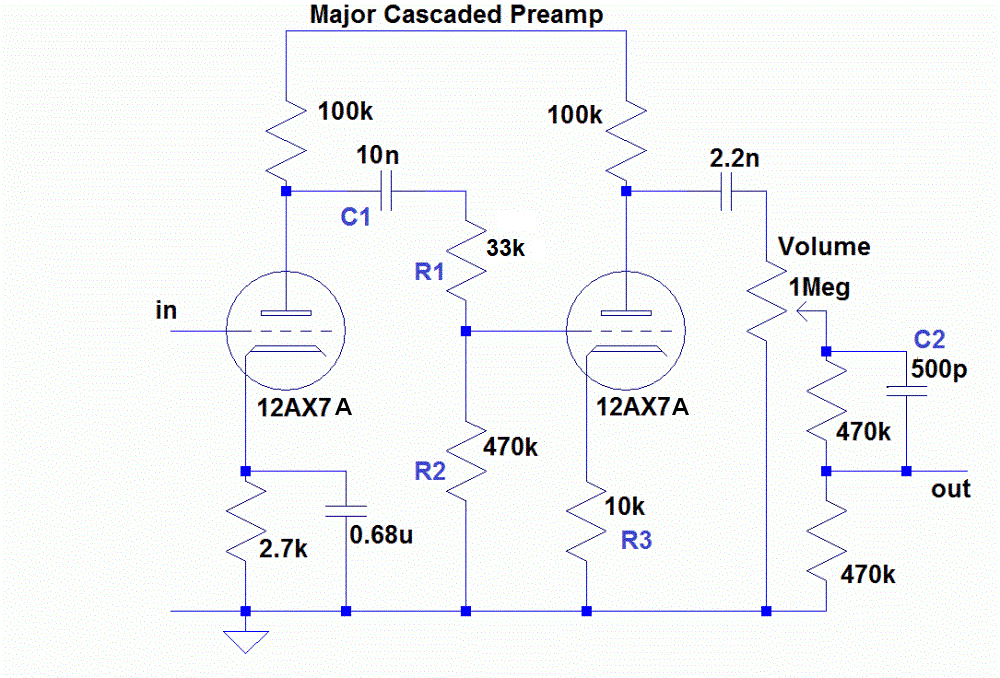
For more basic gain, decrease the R3 resistor to 4,7kOhm. If you decrease the coupling cap C1, you get less bass with tighter bass performance. If you want to get more flexible regarding gain, install a 1MegOhm pot instead of R1 & R2 as pre-volume. This is recommended if you set the R3 lower than 4,7kOhm. (Note: Later on this really big 10kOhm cathode resistor R3 that was going up to 39kohm in some other products was named "cold clipping" and the corresponding triode stage "cold clipper".) For a more versatile pre-amping it is recommended to use a 1MegOhm push-pull pot as regular volume control. The switching stage switches on/off the 500pF brilliance bypass cap C2. With the brilliance cap engaged, (and R3 = 10kOhm), you get the DP_MK2 sound in interaction with a Hornby-Skewes treble booster type. If you switch off the brilliance cap, you get the DP_MK3 sound in interaction with a matching booster (e.g. Galaxy 1011 or Studio '75) in front of the cascaded preamp.
Some gut shots from an old 69 Marshall Major from the first series, belonging to Ritchie.







